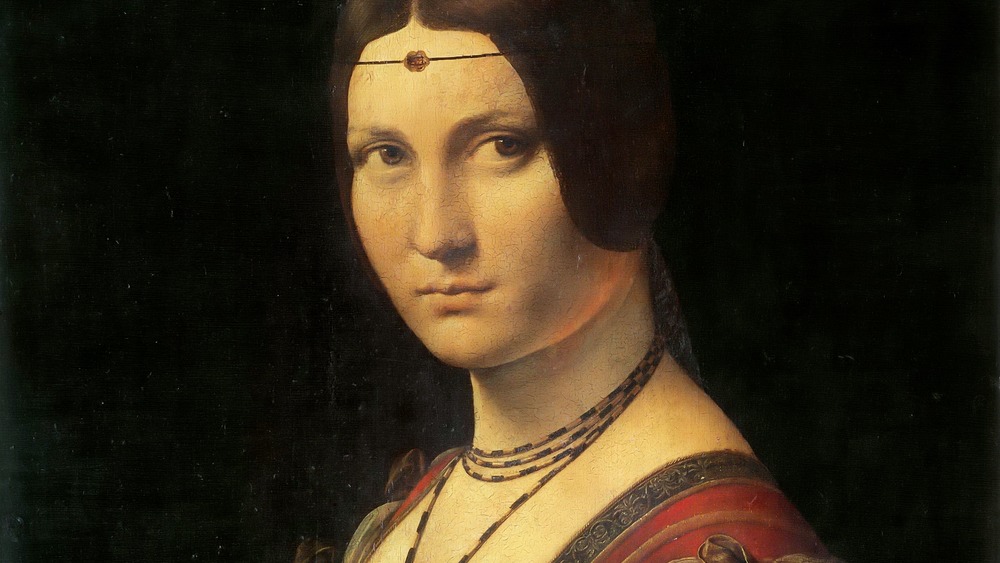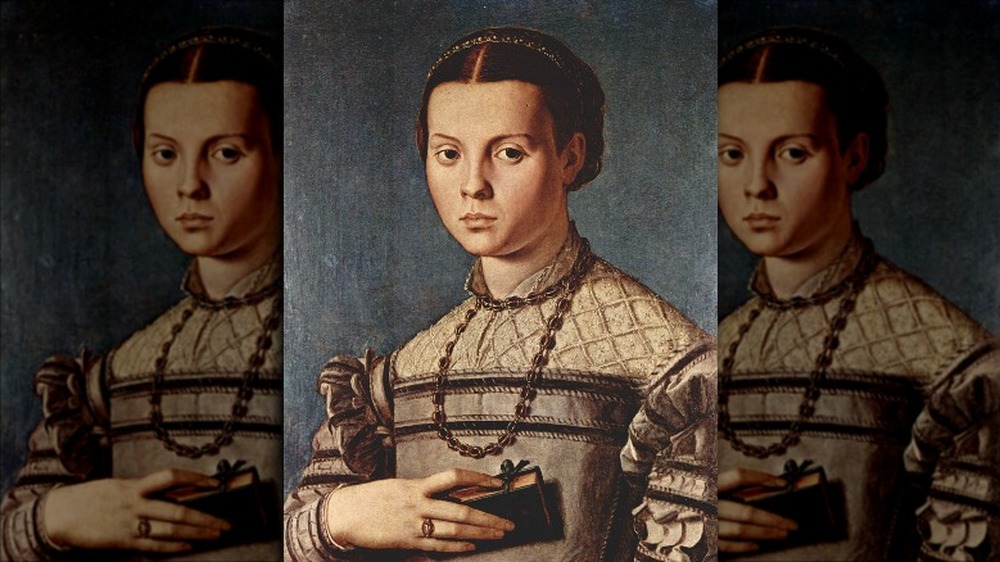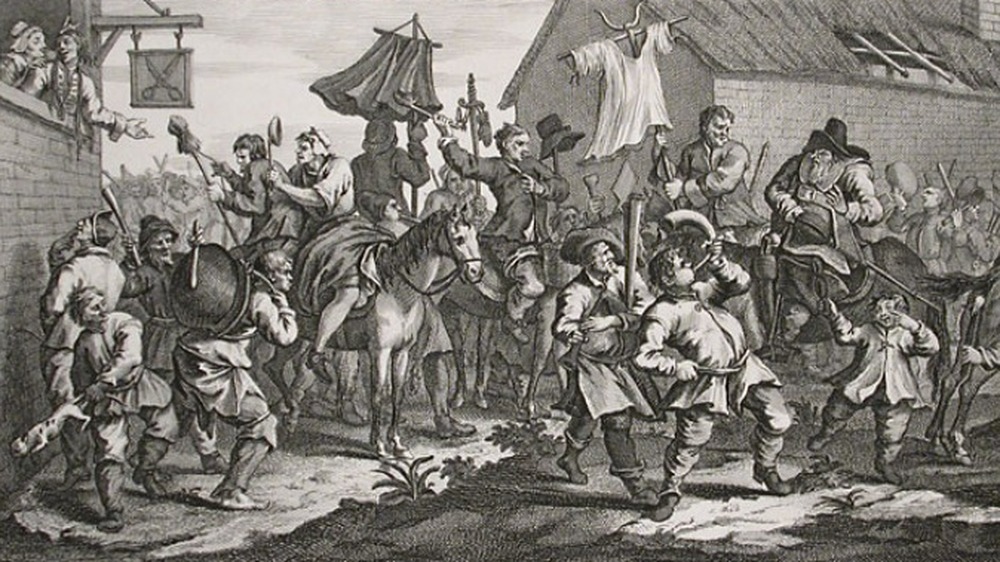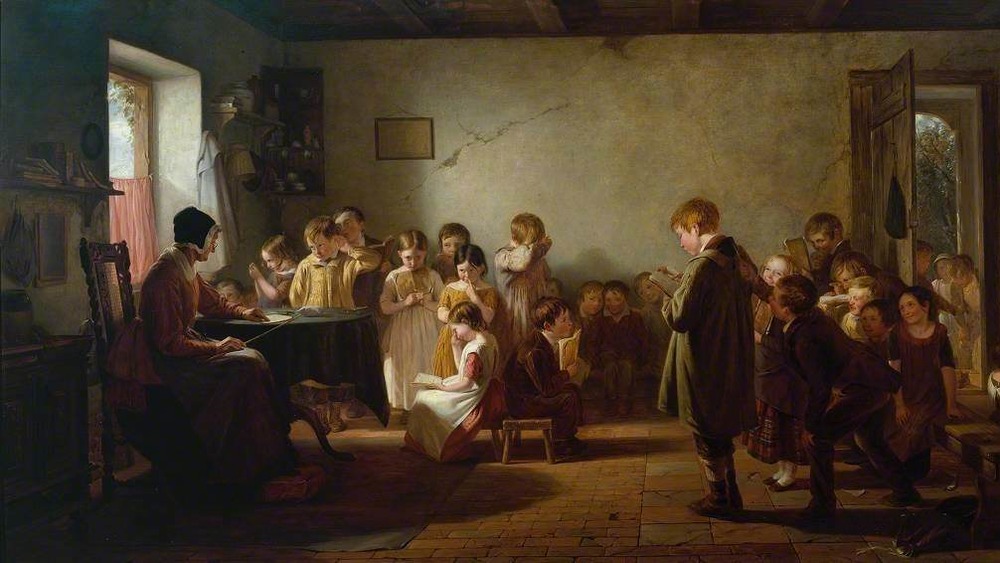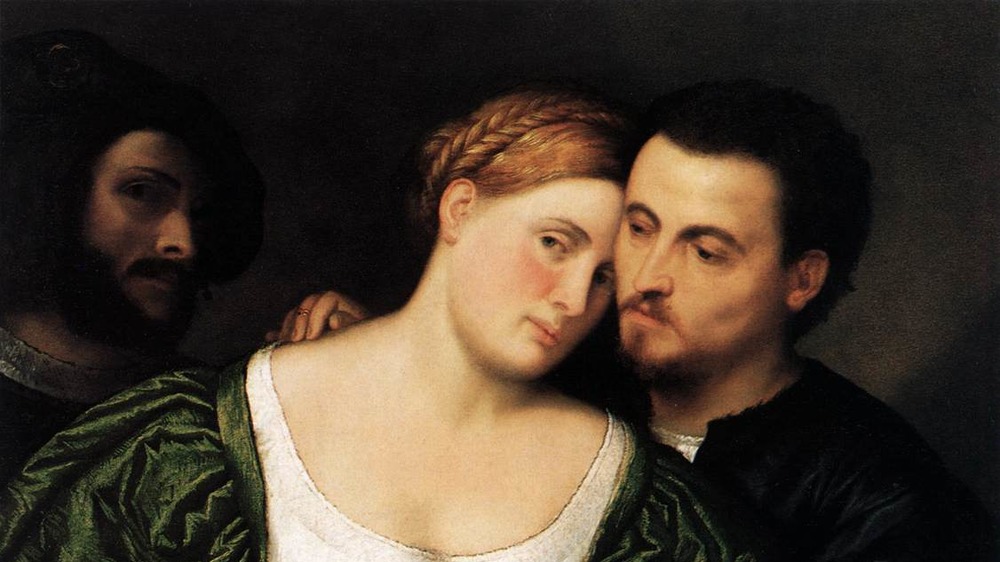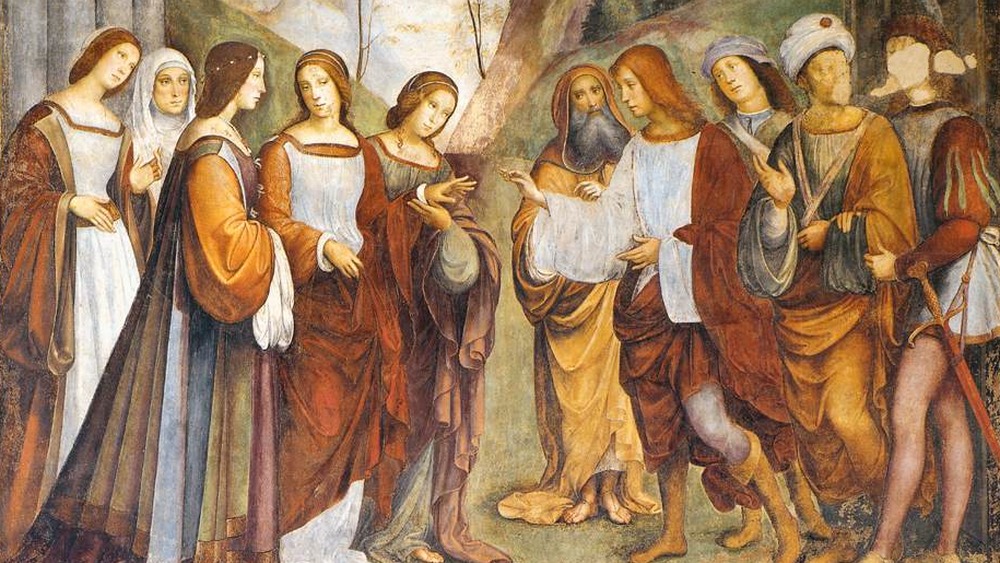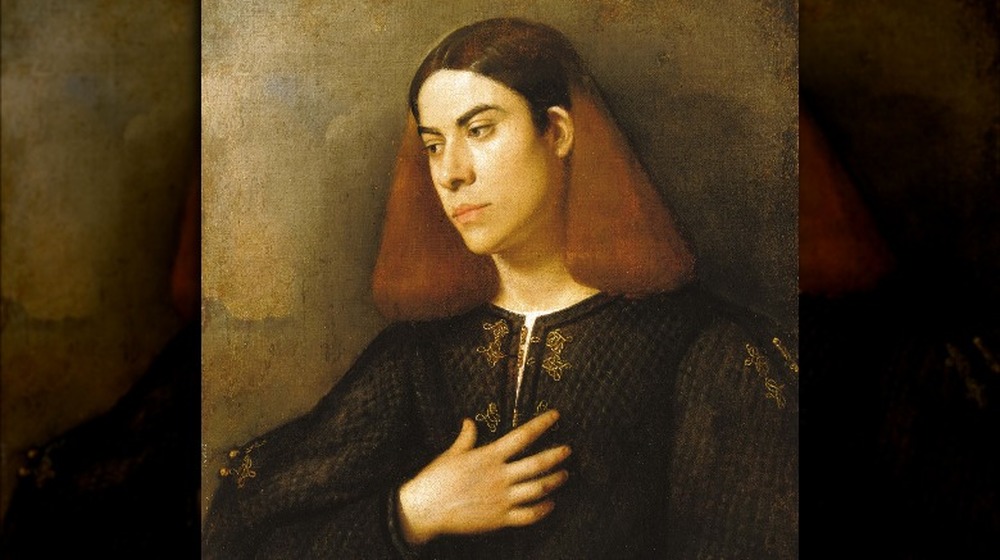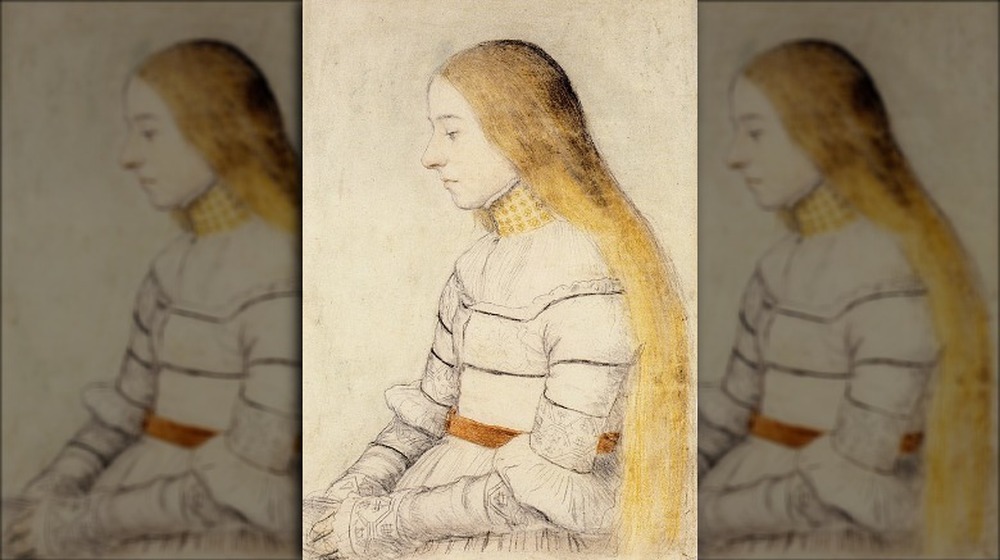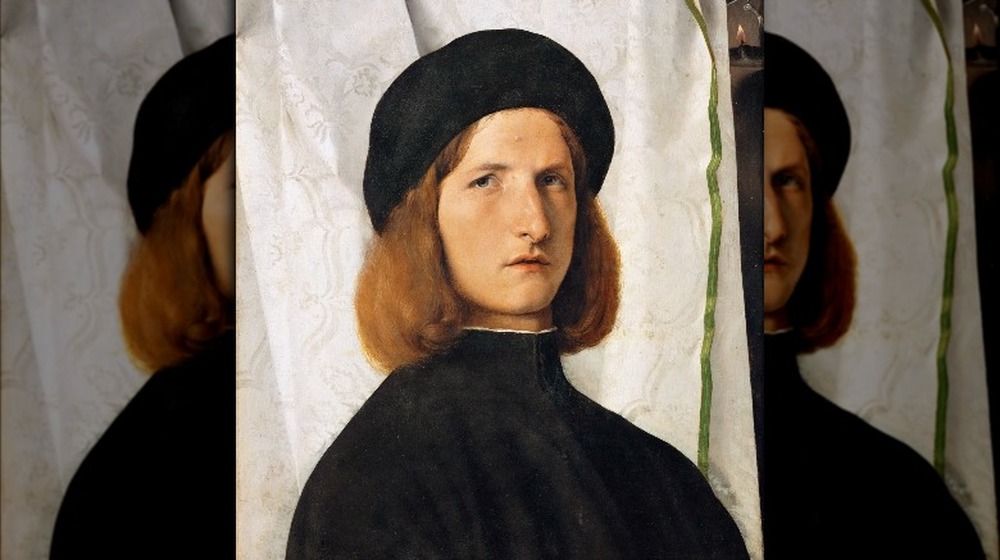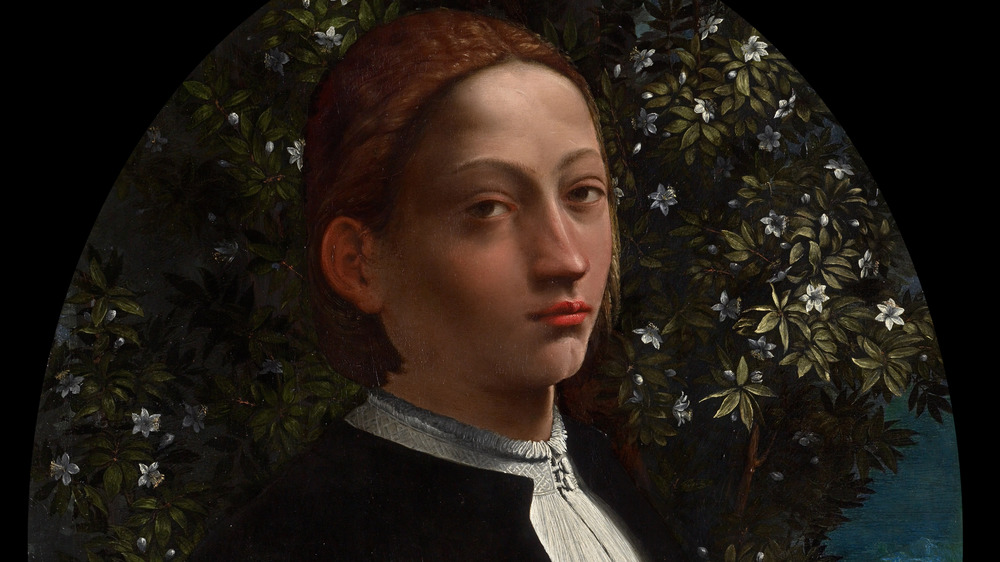This Is How Teens During The Renaissance Really Lived
Being a teenager is tough. As much as some adults may like to make fun of the ways that teens are, they deserve some sympathy. They're trying to establish themselves as independent beings, but, according to National Geographic, their brains are alive with newly forged connections meant to push boundaries and find their place in the world. Given that they're so new to the concept of adulthood, is it any wonder that they sometimes make a bit of a mess along the way?
Why should it have been any different throughout history? Even a quick glance at the historic record shows that adults have been complaining about teens and young adults for thousands of years, the BBC says.
At least the Renaissance era was an interesting time to annoy adults and become one yourself. Societies throughout Europe were experiencing a new upheaval every other year, it seems, from coming up with fancy new fashions to getting bloodthirsty over doctrinal differences. Coming into one's own adulthood during this time had as many consequences as a Choose Your Own Adventure book. Someone's teenage life could lead them to become a religious dissenter, a royal trapped in a gilded cage, a daring explorer, and about anything in between. If nothing else, the truth of being a teenager during the Renaissance is bound to surprise you.
No one in the Renaissance knew exactly what a teenager was
For much of recorded history, people didn't have a concept of the "teenager." According to MEL Magazine, our modern idea of teens didn't emerge until well into the 20th century. The broader concept of adolescence, spanning the period of time after puberty and into young adulthood, has a bit of a longer history. It's also worth remembering that, however they were defined, Renaissance teens were subject to a variety of experiences depending on family, culture, and economic background. An adolescent growing up in a farming community in England would have had a very different life from one born to a noble Italian family. Like teens today, their stories vary widely depending on their context.
Of course, people in the Renaissance understood that everyone went through different life stages. As ThoughtCo argues, Shakespeare himself drew on widely accepted beliefs when he wrote about the seven ages of man, which included adolescent lovers "sighing like a furnace." Renaissance ideas like this were based on earlier medieval views, where people were understood to transition from dependent childhood to independent adulthood. According to Medieval Children, even newly minted adults were expected to get right into grown-up things like getting married and making their confession to the local priest. Still, some speed bumps were expected even then, as The Early Modern Child in Art and History explains that teens were seen as ambiguous young adults, often ready to go wild with hormones and crazy ideas.
Renaissance teens were made someone else's problem as soon as possible
Adults throughout history have often liked to make hackneyed jokes about how teens are such trouble that it would be nice, on occasion, to simply send them away. In a healthy modern family, it would simply end as a joke, but Renaissance society took it further. For them, however, this was a move that was in the service of their families and teens themselves.
According to the BBC, this hurrying along of teens was often part of a larger apprenticeship tradition. In England, one Italian ambassador's assistant wrote that he was a bit shocked to see that British folks sent their children out at the tender age of seven or nine, for terms that lasted up to nine years. The English told him that it was all for the best, as the kids would gain important skills through their work that could raise their station in life. The ambassador, meanwhile, wrote that he thought the situation arose because it was easier for adults to make someone else's children work harder and eat less than they would their own.
Prevailing thought about teens might have made things easier for some families. Past & Present notes that in England, children were already thought to be a bit savage and tainted by original sin. They were, in the words of one contemporary writer, ready to "take and embrace vice, unthriftines and al maner noughtinesse" if they didn't have someone there to guide them.
Renaissance teenagers got rowdy in an organized way
Some teens, released into independent or quasi-independent lives with all of their youthful vim and vigor, seemed duty-bound to cause trouble. Surprisingly, this trouble often had a structure. According to the BBC, some European teenagers teamed up to create abbayes de jeunesse or "abbeys of misrule." These were essentially social clubs of hell-raisers who occasionally got together long enough to elect a leader called the "King of Youth." The king and his rowdy fellows got the most press during topsy-turvy times of year, like annual carnivals and markets. Apprentices also joined forces to wreak havoc throughout their towns. These things weren't all that different from previous generations, however much commentators wanted to argue. St. Bede, the eighth-century British chronicler, quoted in Old Age in the Middle Ages and the Renaissance, moaned about youths who were full of "red choler" that made them "swift-footed, bold, irritable, and active."
Rowdy young adults oftentimes convinced themselves that they had more of a purpose than merely infecting their community with chaos. Some groups, having determined that a person in the town had violated the social code, decided to grace them with a noisy serenade. This tradition, which Past & Present reports has been called charivari or "rough music," was essentially a public shaming. The teens might gather beneath someone's window, banging pots and pans, playing trumpets, and carting around yowling cats to make the point that whomever was targeted should be embarrassed of themselves.
Few Renaissance teens saw the inside of a school for very long
As the Renaissance era unfolded, education became more widespread, but it wasn't available to everyone. Things like a university education were accessible to only a privileged few. Lower-class teens might be expected to have already completed basic schooling at places like dame schools, which, according to the British Journal of Educational Studies, were small, privately run schools that taught youngsters the alphabet, a few Bible passages, and how to manage household chores. Once they were done with the dame schools or whatever other option they had, their formal education was over.
British teenagers and young adults who did make it into the classroom for an extended period of time likely benefited from the work of the English humanists. According to Britannica, humanistic education focused on students' choice of their studies and a holistic approach to education, all of which arguably have their roots in 15th-century England. It received even more influence from the Italians, says The Oxford Handbook of the History of Education, who really keyed into concepts like logical reasoning, empirical evidence, and plenty of debate. Hopefully, those students also enjoyed reading in Latin and Greek, too, as educators were often keen to emulate the ancient Greeks and Romans.
Renaissance teens were allowed to get pretty close to each other
Though there certainly wasn't comprehensive sex education in most Renaissance communities, neither were teens of the era totally in the dark. Some parents even allowed them to get surprisingly close to one another. Of course, truly libertine parents were rare, so it wasn't as if communities were letting amorous youths run wild. They often got to indulge in a romantic middle ground, however, with courting practices that included full-body cloth sacks to keep everyone honest.
This practice, often called "bundling", dates back at least to the Middle Ages and, according to ThoughtCo, was well-known by the Renaissance era. Essentially, courting couples were allowed to share a bed, so long as they kept their clothes on. For extra security, they might have a "bundling board" strapped between them, or a cloth bag secured over their legs or body to keep wandering hands out of the picture. The idea was that the pair could get to know one another without risking the social censure generated by, for example, a secret meeting in the hay barn. Depending on the time of year, this was also a way to learn more about your beau and also stay warm.
If overeager teenagers managed to go too far, social censure wasn't always as harsh as we might assume. According to the Journal of Social History, it wasn't unheard-of for teens to get pregnant and get married quickly thereafter, though neither was it encouraged.
Some Renaissance teens could wait to get married
During the Renaissance, some people were able to wait for marriage. As per Internet Shakespeare Editions, the average age for 17th-century English couples at marriage tended to be 23 for women and 26 for men. However, the age of consent for boys was 14 and only 12 for girls. Meanwhile, the Victoria & Albert Museum reports that girls in 15th-century Florence typically married between ages 15 and 19.
You may think that this is a case of peasants with nothing better to do, but it appears that they had the most choice of all. Having money did not always make things easier for Renaissance teenagers. Some noble families hurried their teens off to weddings at early ages in order to secure alliances with other families. According to the Folger Shakespeare Library, upper-class girls were more subject to arranged marriages, even while more and more people were talking about this new concept of marrying for love.
If all this variation in age and social standing isn't enough to make you question whether or not teen marriage regularly happened during the Renaissance, some scholars wonder if we should trust records in the first place. Renaissance Quarterly notes that records from Florence indicate that people were almost certainly rounding their ages up and down. This confusion about a person's age wasn't so much about vanity as it was about the fact that few people at the time knew their exact birthdate.
People fussed at teenagers about newfangled Renaissance fashions
If there is anything consistent in the history of teenagers, it's adults complaining about them. What could have caused the obligatory finger-wagging during the Renaissance? Long hair, apparently.
According to The Premodern Teenager, 15th-century Italian youths liked to wear their hair long, even curling the ends for extra social credit. As this was a style distinct to young folks, it was often derided, with one preacher admonishing boys to "keep your hair a proper length." This was echoed almost word-for-word in the 1960s and 1970s, according to West Virginia University, when lengthening hair styles for young men once again caused much gnashing of teeth.
Some young men might have cropped their hair short but got pretty racy otherwise with tight-fitting clothing. Yes, teenage fashion trends of the Renaissance included the rise of the codpiece. As per The New Yorker, the codpiece began as a simple triangle of cloth connecting one stocking to another. Over time, people seized on the opportunity to show off, and the original cloth gusset became larger, more decorative, and generally harder to ignore. Someone, presumably a person with no sense of shame whatsoever, might even reach into their bejeweled codpiece to pull out a bit of poetry or a snack.
In the interest of fairness, however, we can't pin this trend entirely on teenagers. Even kings, like England's bombastic Henry VIII, sported codpieces in their portraits long after their own adolescences had abandoned them.
Teenage girls had to read preachy conduct literature
Although teenage boys might have been handed a pamphlet or two by a well-meaning adult, teenage girls in the Renaissance seem to have borne the brunt of advice for teens. At least, it appears that they were expected to quietly follow that advice while the teen boys were out and about spreading misrule and flashy new fashions everywhere.
Part of the rise in rule-setting conduct literature came about thanks to the growing tide of humanism sweeping across Renaissance Europe, says Cedar Crest College. Part of the humanist philosophy maintained that a good education would produce someone with high moral standards. Hence, middle- and upper-class students who took part were often instructed in ethics, learning to comport themselves as upstanding human beings and productive members of society. Or else, they were instructed in how to conform to societal standards, whether said standards were fairly imposed or not.
Perhaps it's unsurprising, then, to learn that girls and women were the targets of conduct literature. Authors who claimed to have authority on these matters, but who didn't always prove their expertise, told girls to be quiet and not to make a fuss. They were to follow the leads of their fathers and husbands and to guard their chastity. Who presumed to have an insight into the lives of teen girls and women and tell them what to do? As it turns out, the great majority of conduct literature writers were men.
Jewish teens were caught between Renaissance worlds
Though many like to point to the massive achievements of the Renaissance age, from breathtaking art to the emergence of humanism, the era has its dark side. Even the epitome of the Renaissance, Leonardo da Vinci, easily moved from painting a nice, sedate portrait to planning bloody, destructive war machines for various rulers throughout Italy and France, according to Open Culture.
Everyday people indulged in some less-than-savory ideas, too, especially when it came to interacting with people who were different from them. Even their neighbors could be subject to abuse, especially if they were Jewish. Anti-Semitism during the Renaissance was rampant throughout Europe, says Literature and Theology, fueled by long-standing prejudices built up during the Middle Ages. Jewish people were often barred from full participation in civic life, kept from entering some professions, and frequently sequestered in segregated neighborhoods called ghettos.
For Renaissance teens, this presented a serious problem. Many wanted to establish their own independence and explore the world, much like modern teens, but societal prejudices held them back. However, according to The Premodern Teenager, they at least managed to echo their Gentile counterparts by forming their own rowdy groups and a distinct Jewish youth culture. Others weren't even given that small amount of fun. Haaretz reports that one 16th-century Jewish teen was forced to convert to Christianity along with the rest of her family, eventually becoming a nun known as Sister Teodora.
Renaissance teenagers were blamed for the Protestant Reformation
In England, youths were connected to the growing tide of Protestantism, especially if they were smart-aleck types at universities. The Catholic Sir Thomas More, who would later lose his head by order of King Henry VIII, blamed "lewde laddys" for the religious upset, the journal Past & Present reports. He believed that these youths took part in a widespread conspiracy to topple the old religious ways and bring in the English Reformation and its Protestant beliefs.
More may not have been totally off, for about half of the population of England at the time would have been under 20. Combined with the prevailing thought that all teens were fundamentally wild and destructive unless properly corralled, and it's easy to understand how he blamed the religious upset tormenting his nation on upstart youths.
He wasn't the only writer out there pinning charges of heresy on teens. Adolescence and Youth in Early Modern England notes that this was a common complaint, with commentators fretting that the young folks were spreading dangerous heresies throughout the land. Indeed, it appears that many of the most enthusiastic and fervent members of religious movements were young people, though it's hard to get exact numbers out of some historic sources. Puritans, Presbyterians, and other nonconformists of the Renaissance and later eras owed much of their growing ranks to religious dissenting teens.
Royal Renaissance teens got a raw deal
Teenagers in noble and royal households might have looked set for life, but the reality of their lives was complicated. When it came to marriage, they were often little more than pawns in a high-stakes game of dynastic chess.
Take Mary, Queen of Scots, best remembered today as a political rival to England's Queen Elizabeth I. Long before she lost her head by order of Elizabeth, The Washington Post reports, Mary was already part of the political landscape of 16th-century Europe. She became Queen of Scots after the death of her father, King James V, when she was a mere six days old. Mary was only 15 years old when she was married to Francis II, soon to become the king of France. When he died of a fever, she became a widow at 18.
In Italy, Lucrezia Borgia had to deal with her own scandalous family. According to BBC's History Extra, her father was Cardinal Rodrigo Borgia, who later became Pope Alexander VI. Though she was the illegitimate product of a blasphemous union, Rodrigo recognized her and used Lucrezia as a convenient pawn. This meant that she was married to her father's political ally, 26-year-old Giovanni Sforza, when she was only 13. Lucrezia was later painted as an infamous figure in her own right, but it's hard to feel anything other than pity for her as a young teen, forced into marriage by her manipulative, power-hungry family.
